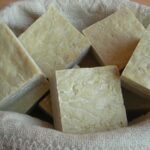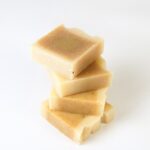What is Lahmacun
Origin of Lahmacun
Lahmacun in Turkish Culinary Culture
Types of Lahmacun
Gaziantep Lahmacun
Şanlıurfa Lahmacun
Other Lahmacuns
It is a kind of stuffed pita in Middle Eastern cuisine. It is made by spreading the stuff prepared with ground meat, parsley, onion, garlic and spices such as isot (red pepper) on the rolled dough and then cooked in a stone oven. All about Lahmacun will be explained below.
Origin of It
People still don’t know the place and date of the first lahmacun. But some say that it originated from the Levant. According to another view on the subject, it is thought that the origin of it goes back to the Babylonians.
It basically consists of a thin and unleavened dough. It does not require advanced preparation and cooking techniques in this sense. Also it seems plausible to claim that the origin of it goes back thousands of years rather than recent history.
Although it is not exactly the same as lahmacun in the Middle East, this flavor, also known as “lahm bi ajin” or “sfiha”, is made in different forms and with different ingredient combinations, and is known as a flavor specific to Lebanon in some countries and Palestine in others. Even Armenians claim that it is their own delicacy.
Moreover, people enjoy it even in South America. This is because of the interesting historical background. In the last period of the Ottoman Empire, starting from the 1860s, the citizens of the Ottoman Empire, who crossed the ocean by immigrating to South America to establish a new life, brought it to that region. Today, this simple yet pleasing flavor, a little different with its Latin interpretation and under the name of “sfiha”. People know and love it in Argentina and Brazil.
Lahmacun in Turkish Culinary Culture
The first historical record of it in Turkish cuisine culture is the “lahm-ı acînlı pastry”. The word lahm-ı acîn, comes from the combination of the Arabic words lahm meaning meat and acîn meaning paste, it seems more reasonable to mean “pasted meat”, that is, pastry containing meat like paste in Evliya Çelebi’s words.
Although it is famous especially in Eastern Anatolia and Southeastern Anatolia regions, it has spread well in our big cities. In this sense, the transition of it from locality to nationality took place towards the end of the 1950s, with the acceleration of the urbanization process of Turkey.
It started to become widespread in big cities with the people who migrated from Anatolia to big cities, cooking it in ovens and selling it on the go in baskets. At the point it have reached today, it has evolved into a popular taste offered in businesses rather than a street food sold on the go.
Types of It
So, how are the varieties of this popular lahmacun in Turkey? It can be classified as eyelet, hazelnut and main size. It is a little more difficult to classify according to its material. Because almost every city, region and even family has its own recipe.
However, in order to preserve the culture and ensure a certain standard, there are also studies such as obtaining geographical indications on how to prepare it.
Gaziantep Lahmacun
Gaziantep lahmacun contains meat minced lamb with armor, garlic, parsley, pepper and various spices. And unlike other types of it, it does not contain onions.
Şanlıurfa Lahmacun
Urfa lahmacun is one of the most famous type of it. People prepare it by passing the fatty ground beef with fresh red pepper, adding Şanlıurfa Pepper (Isot), salt and tomato paste to the ground minced meat, and cooking it for the ground meat spread on unleavened dough.
Other Lahmacuns
People make Hazelnut lahmacun widely in Tarsus even though there aren’t any clear geographical indications yet. There are also businesses that make a smaller lahmacun, also called “kuşgözü”, which is even smaller than hazelnut lahmacun. Adana also has a large lahmacun called “tabaltı”. People still sell this in Adana.












